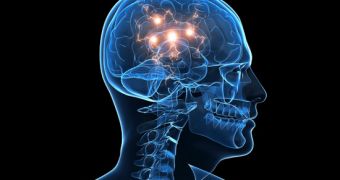German researchers say that people who have no issues staying up all night and are most productive during this time of the day have different brains than individuals who prefer going to bed at fairly reasonable hours and waking up at the crack of down.
They also claim that, all things considered, these differences in the anatomical makeup of brains belonging to night owls and brains belonging to early risers might explain why the first are more likely to suffer from depression and a condition often referred to as chronic jet lag.
In an attempt to pin down the differences between night owls and early risers, the researchers scanned the brains of 59 volunteers, Daily Mail tells us.
20 of these people had intermediate chronotypes, meaning that they neither went to bed too late, nor woke up too early. 16 of them qualified as morning people, and the remaining 13 were night owls.
When comparing the makeup of the volunteers in the second and in the third category, the researchers found that the white matter in the latter's brains was by no means as healthy as the one belonging to the early risers.
On the contrary, it was fairly damaged, especially in areas previously linked to depression and sadness.
The researchers suspect this is the reason why these people are more prone to developing said medical condition and also suffer from a form of chronic jet lag.
What's more, these anatomical differences might also explain why night owls tend to drink and smoke a tad more than other people do.
“We think this could be caused by the fact that late chronotypes suffer from this permanent jet lag,” researcher Jessica Rosenberg with the Aachen University in Germany reportedly told the press.
The researchers plan to carry out further investigations and hopefully determine how and why these two groups of people come to have such different brain anatomies.
“It's interesting that there are individual differences, but we need to understand what is causing them and find ways of creating environments in which those differences can be attenuated,” Derk-Jan Dijk, director of the Surrey Sleep Research Centre in Guildford, UK, wished to stress.

 14 DAY TRIAL //
14 DAY TRIAL //